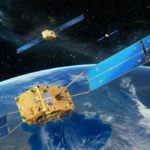
The GNSS receiver is the cornerstone of aircraft navigation systems. The system processes signals from satellite constellations and the Space Based Augmentation System (SBAS) to accurately determine aircraft position, altitude and velocity. The prototype receiver developed under the auspices of the EDG²E project will use signals from US GPS and European Galileo positioning systems, as well as from SBAS multi-constellation EGNOS. The project aims to achieve a prototype demonstration by 2021. The prototype receiver performance will be evaluated during a flight test campaign performed by ATR using one of the company’s test aircraft.
Initiated by the GSA, the EDG²E project will support the launch of the Galileo satellite constellation.
The cornerstone of aircraft navigation systems
EGNOS has been certified for use in aviation since February 2011, and is a very effective system to complement the US GPS, in order to provide better levels of performance, consequently enhancing aircraft approach capabilities. The next generation of EGNOS, called EGNOS V3, will further enhance performance by complementing both the EU Galileo and the US GPS satellite navigation constellations.
“EGNOS v3 will provide aviation users with an increased quality of services, better accuracy and extended coverage area among other key performance indicators” said Jean-Marc Pieplu, GSA Head of EGNOS Services Programme.
“Fundamental Element Programme is a medium that supports development of terminals and antennae fostering use of E-GNSS in all domains. In this perspective, EDG2E is an important step for GSA as it will contribute to availability of high technology products on the aviation market, taking benefit of Dual Frequency Multi Constellation feature offered by EGNOS v3”.
At the end of the EDG²E project, a new standard for GPS Galileo and SBAS aviation receivers will be completed, and the first SBAS dual-frequency GPS Galileo receivers for aviation will be ready for final development and provide safer operations not only for the aviation sector but also for other safety-critical applications.
